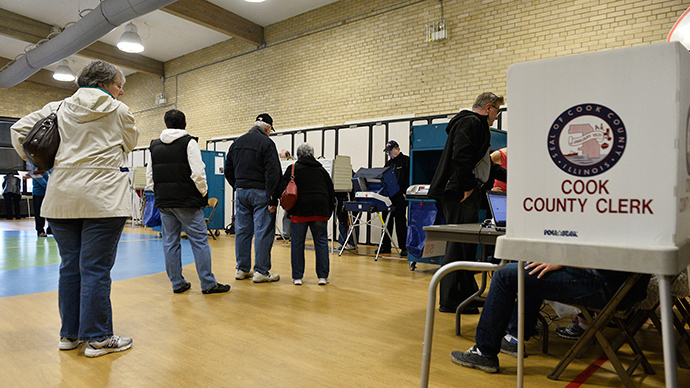Record 4 in 10 Americans identify as political independents - poll

The number of Americans who identify themselves as independent of the dominant US political parties has hit an average of 43 percent, marking a new high in Gallup polling since 1988.
The 43 percent of voters who claim they are political independents, before taking into account those who lean toward either the Democratic or Republican Party, has risen steadily since 2008 - the year in which identification with the Democratic Party hit a 25-year high, at 36 percent, amid the end of Republican George W. Bush’s second term in office.
Since 2011, the number of self-identified political independents has hovered above 40 percent, with each year in that time period marking a new high since 1999, when independents numbered 39 percent of poll respondents.
Overall, 30 percent of respondents identify as Democrats, a number down slightly from recent years. This number also represents what Gallup reported as possibly the lowest figure for Democrats since the 1950s.
“Although the party identification data compiled in telephone polls since 1988 are not directly comparable to the in-person polling Gallup collected before then, the percentages identifying as Democrats prior to 1988 were so high that it is safe to say the average 30% identifying as Democrats last year is the lowest since at least the 1950s,” wrote Gallup’s Jeffrey M. Jones.
Twenty-six percent of all respondents identify as Republicans, up one percentage point from 2013 - the year that the number of Republicans hit a new low since Ronald Reagan’s first term in office in the early 1980s.
The low party identification numbers, Gallup posited, are likely related to widespread disgust with partisan gridlock in Washington and longstanding discontent with actions taken by both political parties, Congress, and the White House.
The new Gallup poll also surveyed whether independents “leaned” toward a major party.
“An average of 17% of Americans who initially identified as independents subsequently said they ‘leaned’ Republican, 15% were independents who leaned Democratic, with the remaining 11% not expressing a leaning to either party,” according to Gallup.
All in all, the poll found that 45 percent of the total respondents associate with or calle themselves part of the Democratic Party, while 42 percent call themselves Republicans or are Republican-leaning independents.
“That the three-point Democratic edge was down from six points in 2013, and among Democrats' smaller advantages the past 25 years,” Gallup added.
“The only year Republicans held a notable edge since Gallup began tracking independents' political leanings was in 1991, the year Republican President George H.W. Bush's approval ratings soared after the United States' victory in the Persian Gulf War,” Gallup noted.
So, while self-identified political independence has hit a new high, many of those who claim no strict allegiance to either major party will end up voting for major party candidates.
“What we have here isn't so much a rise in political independence as much as a rise in the desire to be labeled ‘independent,’” wrote the Washington Post. “Indeed, almost every indicator shows that the American people are actually becoming more polarized, more electorally predictable, and less swing-y -- i.e. less independent.”
Furthermore, third-party candidates receive little support in US presidential or congressional elections.
Gallup reported that “given historical trends, 2015 could bring a new record” for self-identified political independents in the US, “as the percentage identifying as independents typically increases in the year before a presidential election, averaging a 2.5-point increase in the last six such years.”
Gallup’s latest results are based on aggregated data from 15 separate telephone polls conducted in 2014.












